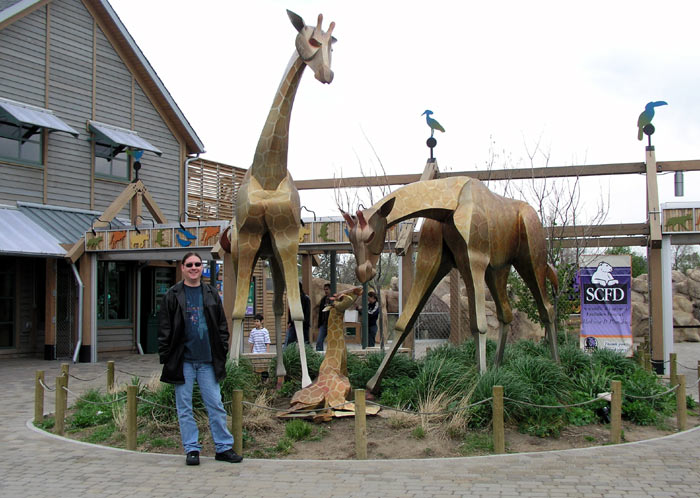
I took an afternoon off via flex time so Mike and I could go to the zoo
(since we have a membership and there
are new animals to see). Here's a picture of Mike near the entrance.

The first stop was an open pen near the entrance where the porcupines live. They were running about, and we could
hear their quills rattling. They came very close to us, but were then spooked by a group of kids, so they went scuttling back to their
hole.

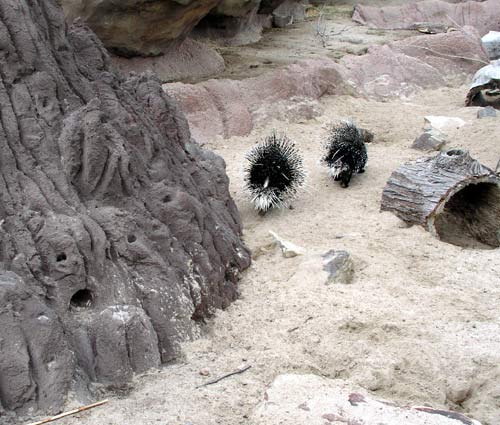
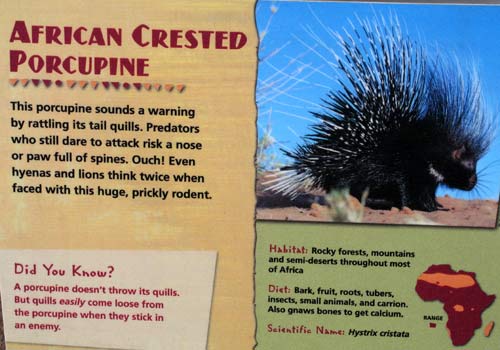
The sign reads:
African Crested PorcupineThis porcupine sounds a warning by rattling its tail quills. Predators who still dare to attack risk a nose or paw full of spines. Ouch! Even hyenas and lions think twice when faced with this huge, prickly rodent.
Did you know? A porcupine doesn't throw its quills. But quills easily come loose from the porcupine when they stick in an enemy.
Habitat: Rocky forests, mountains, and semi-deserts throughout most of Africa.
Diet: Bark, fruit, roots, tubers, insects, small animals, and carrion. Also gnaws bones to get calcium.
Scientific Name: Hystrix cristata
The pen next to the porcupines contained the tiny African antelope (Dik-Dik) as well as several kinds of African birds. The
Dik-Dik was awfully cute!
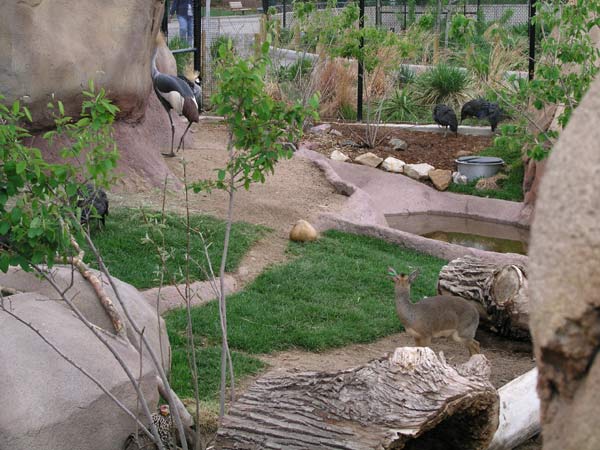
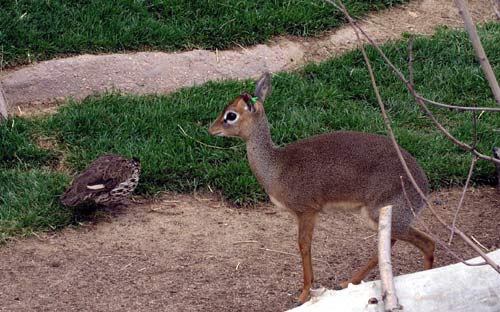
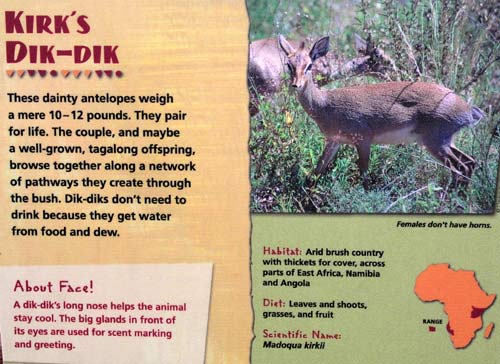
Kirk's Dik-DikThese dainty antelopes weigh a mere 10-12 pounds. They pair for life. The couple, and maybe a well-grown, tagalong offspring, browse together through a network of pathways they create through the bush. Dik-dik's don't need to drink because they get water from food an dew.
About face! A dik-dik's long nose helps the animal stay cool. the big glands in front of its eyes are used for scent-marking and greeting.
Habitat: Arid brush country with thickets for cover, across parts of East Africa, Namibia and Angola.
Diet: Leaves and shoots, grasses, and fruits.
Scientific Name: Madoqua kirkii "
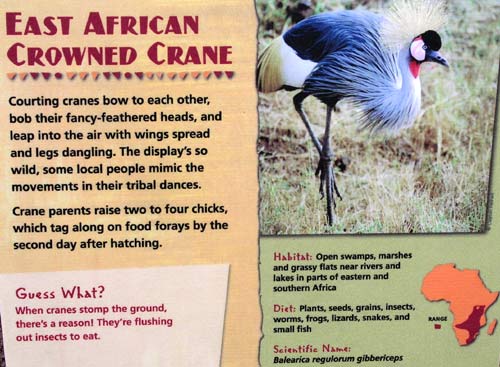
"East African Crowned CraneCourting cranes bow to each other, bob their fancy-feathered heads, and leap into the air with wings spread and legs dangling. This display's so wild, some local people mimic the movements in their tribal dances. Crane parents raise two to four chicks, which tag along on food forays by the second day after hatching.
Guess what? When cranes stomp the ground, there's a reason! They're flushing out insects to eat.
Habitat: Open swamps, marshes and grassy flats near rivers and lakes in part of eastern and southern Africa.
Diet: Plants, seeds, grains, insects, worms, frogs, lizards, snakes, and small fish.
Scientific Name: Balearica regulorum gibbericeps
On the way to see the big cats, we passed a sleeping hyena.
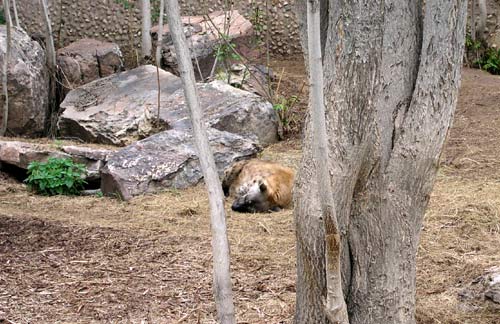
The first cat we came across was the snow leopard. We really like their long fluffy tails. This particular snow
leopard was busy chasing a grass hopper. We were laughing at how cats are cats - this chase reminded us a lot of
watching Phoebe.
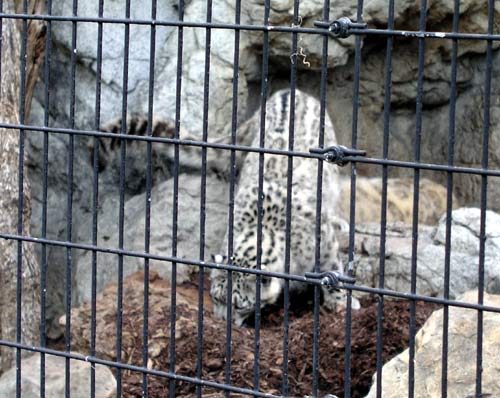
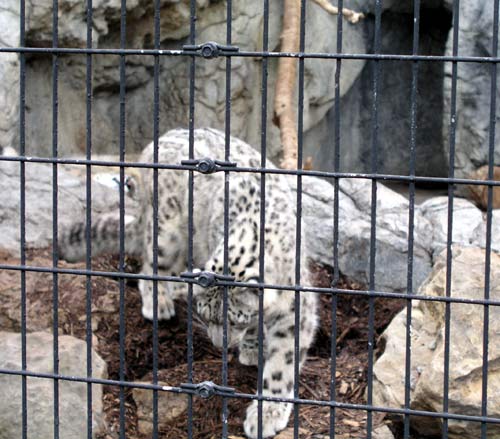

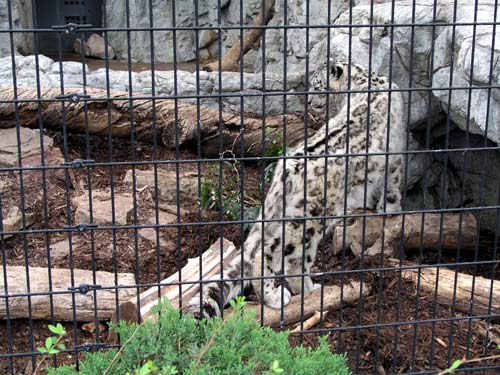
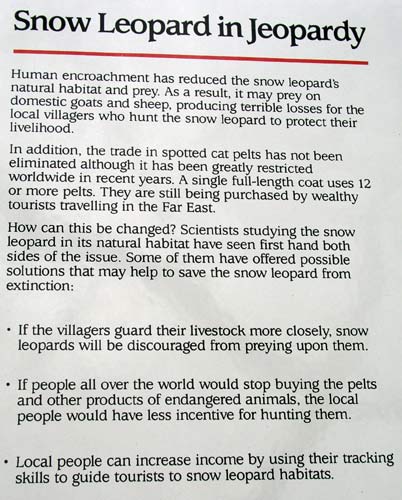
In the next cage was a jaguar.

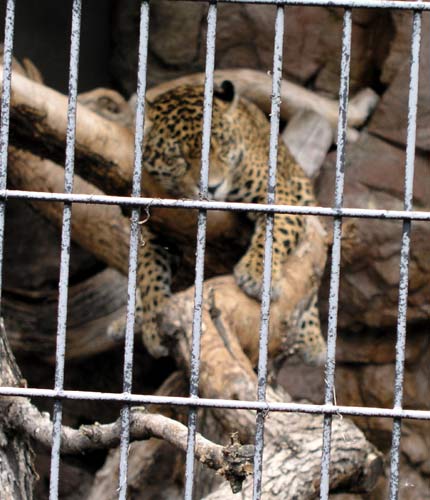
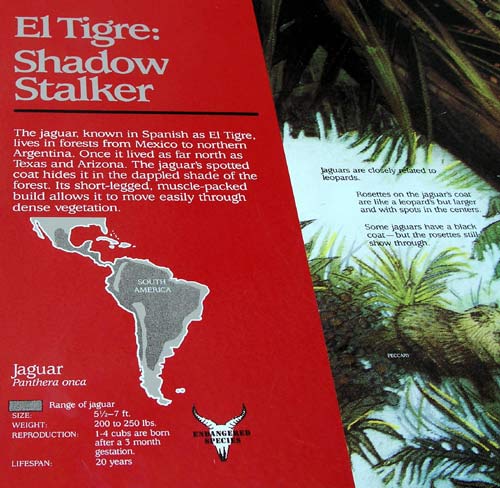
El Tigre: Shadow StalkerThe Jaguar, known in Spanish as El Tigre, lives in forests from Mexico to northern Argentina. Once it lived as far north as Texas and Arizona. The jaguar's spotted coat hides it in the dappled shade of the forest. Its short-legged, muscle-packed build allows it to move easily through dense vegetation.
Size: 5 1/2 - 7 ft
Weight: 200 to 250 lbs
Reproduction: 1 - 4 cubs are born after a 3 month gestation
Lifespan: 20 years
Next was an open pen with a cat needing no introduction - a tiger. He was busy exhibiting Phoebe-like behavior, too. He
saw the window washer on the other side of the window and was pawing at him.
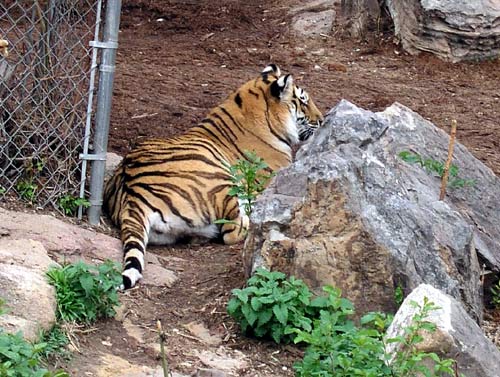
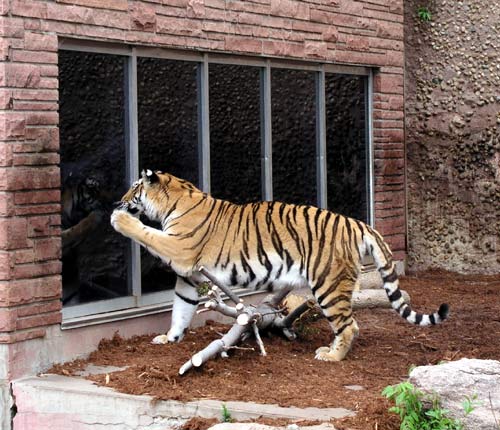
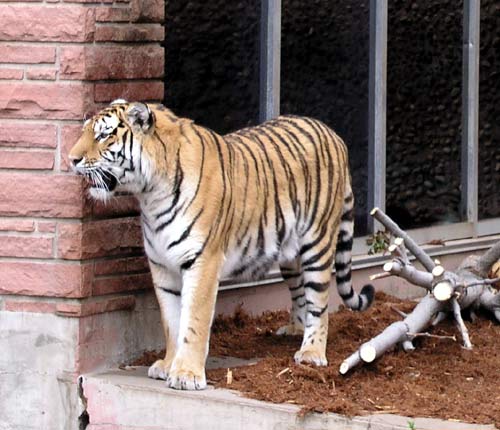
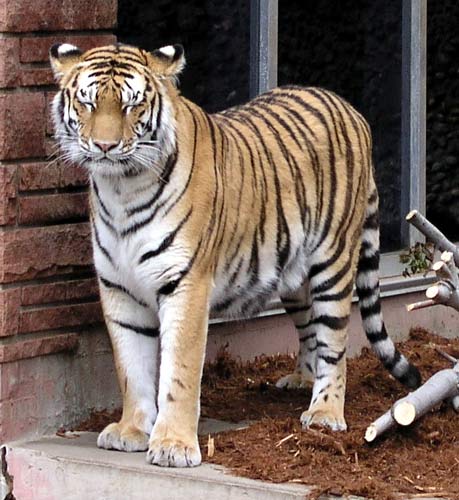
Giraffes are Mike's favorite, so of course we stopped to see the new youngens.
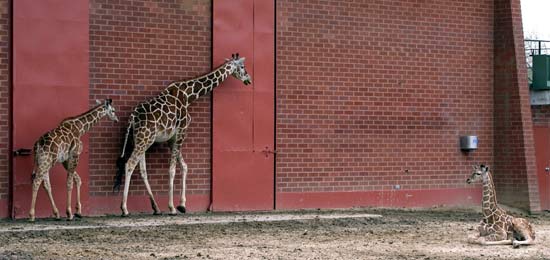


Inside the cat house, we found another tiger, a jaguar, and some meerkats (different cages, of course!)
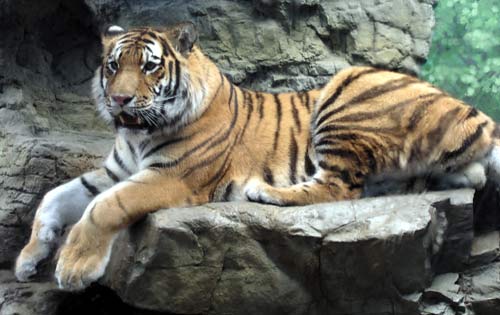

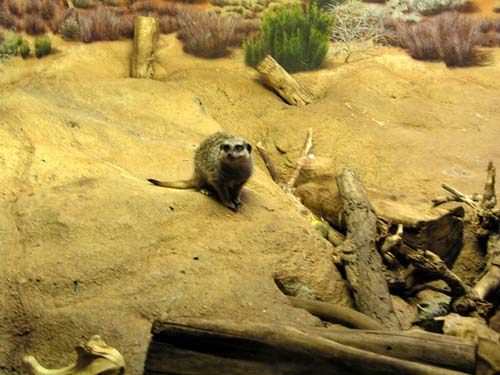
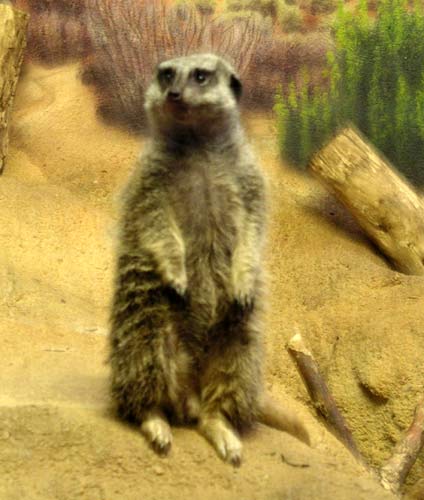
We also saw some sort of night creature, who was very hard to take a picture of because he kept darting around.
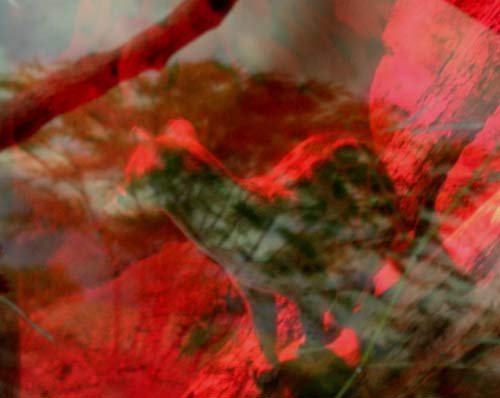
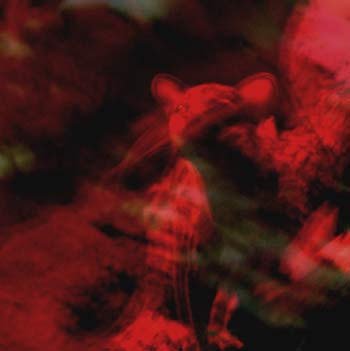
On the other side of the cat house, there is usually a seemingly empty pen. Today, the wolf was in a pacing sort of mood,
so our only challenge in getting a picture was to react quickly enough as he walked by.


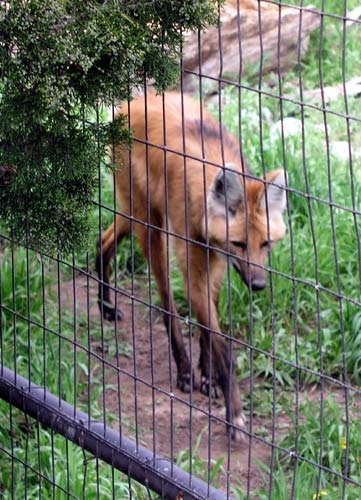
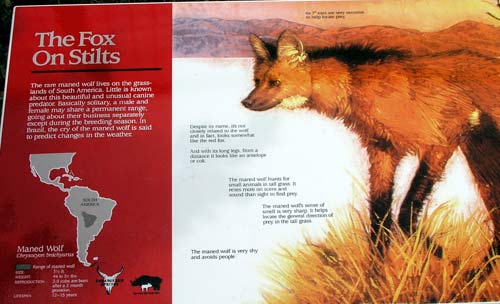
The Fox on StiltsThe rare maned wolf lives on the grasslands of South America. Little is known about this beautiful and unusual canine predator. Basically solitary, a male and female may share a permanent range, going about their business separately except during the breeding season. In Brazil, the cry of the maned wolf is said to predict changes in weather.
Size: 3 1/2 ft
Weight: 44 to 51 lbs
Reproduction: 2 - 5 cubs are born after a 2 month gestation
Lifespan: 12 - 15 years
On our way to see the polar bears, we passed one of the roaming peacocks...

who squawked at me (which required crooking his neck? for emphasis at least)
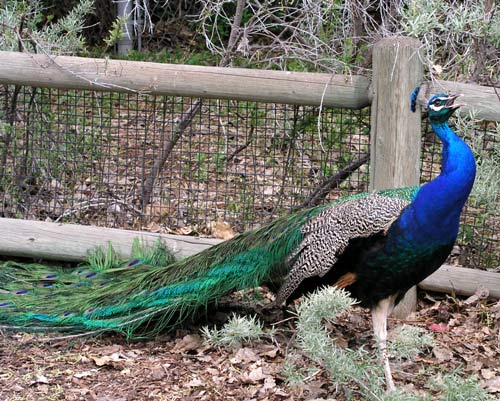
Here are the baby polar bears, Koda and Nuka, with their mom.
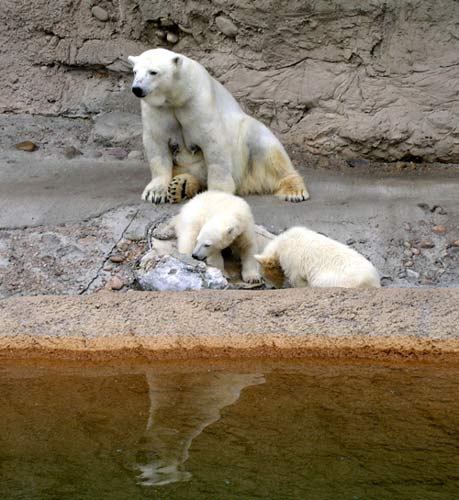
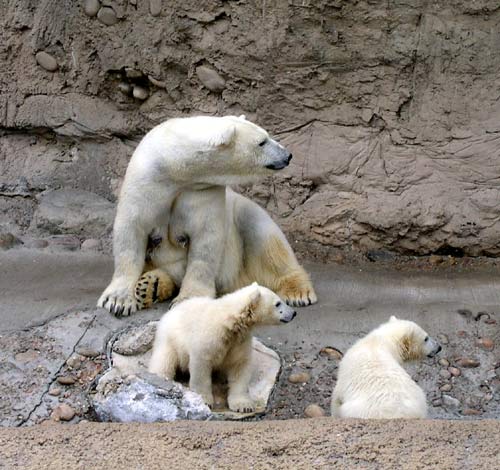
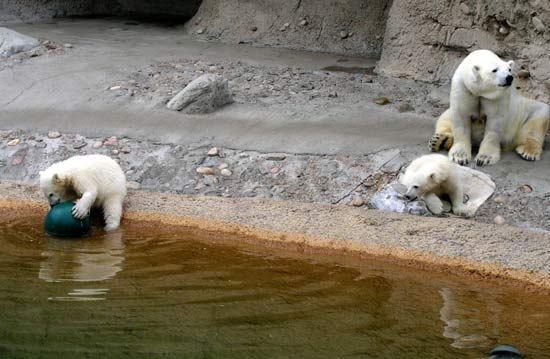
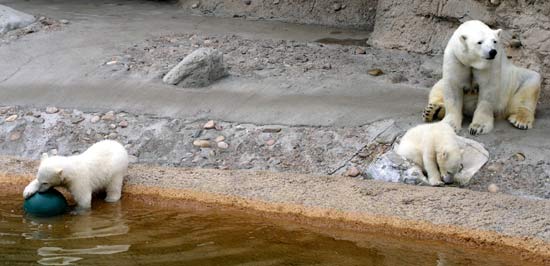
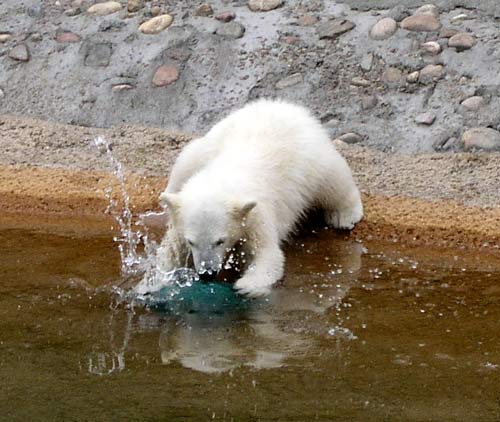
In the next pen, Dad was being goofy. Mike was surprised at the dexterity with which he maneuvered the ball.
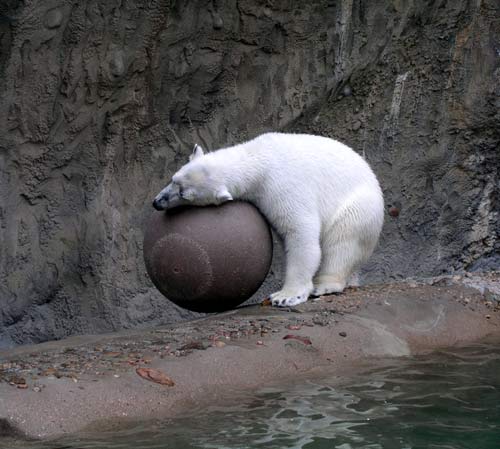

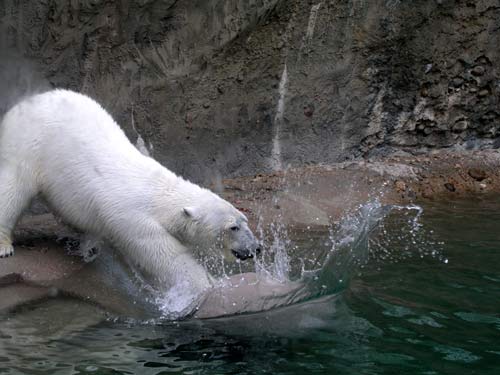

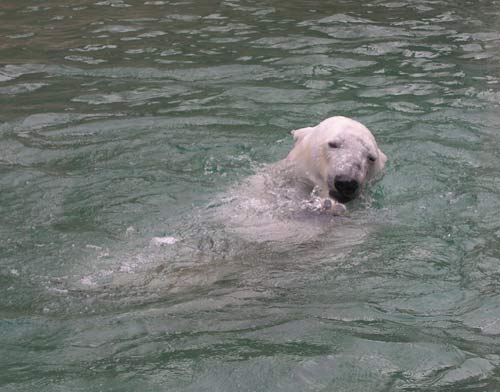
An otter swimming:

One playful seal trying to get the sleepy one to move....

On our way to "Predator Ridge" and the primate exhibits, we passed the outdoor tiger pen again...and we had to stop to see what
all the sorrowful moaning and groaning was about! We found a very very sad tiger who couldn't remember how to get to the lower
pit in the pen. Don't worry - the story has a happy ending. He eventually remembered that he didn't have to jump all the way down there after all
(a
thought that was the cause of much worrying and flattened ears). It turned out he already had a tunnel to get between levels.

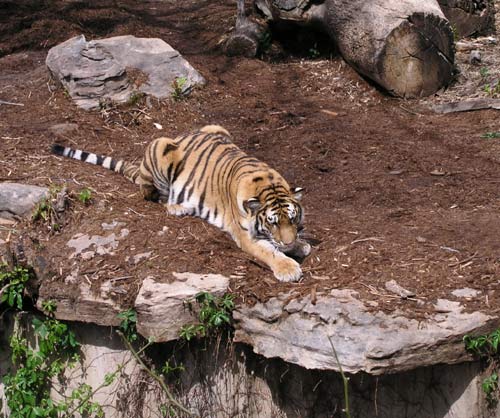
At Predator Ridge, we saw hyenas in one pen and a very sleep baby hyena with its mom in another.

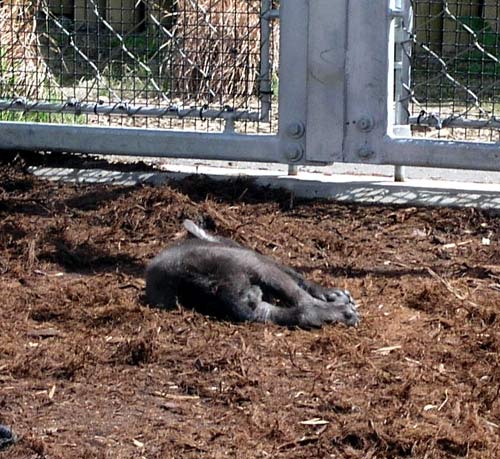
We also saw the African dogs - so sad what happened to the African dogs....
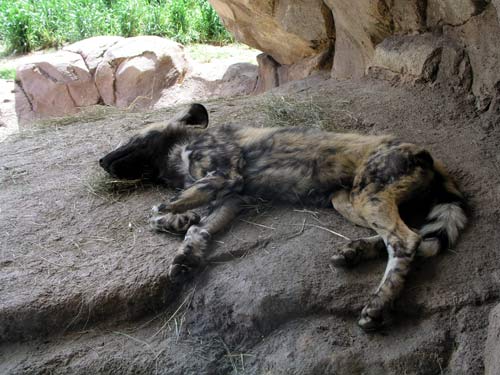
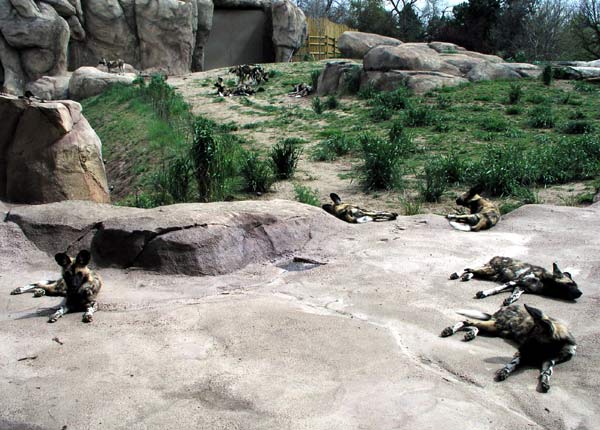
Actually, they're fine. As soon as they thought they heard treats coming, they perked right up. :>)
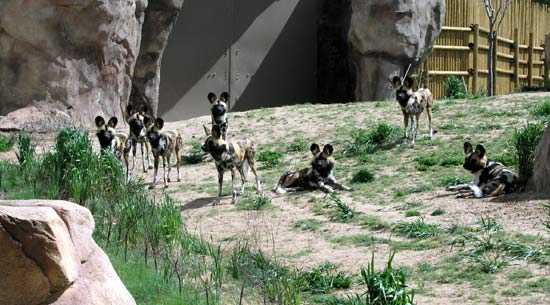

Mike liked the one in the bottom left-hand part of the picture.
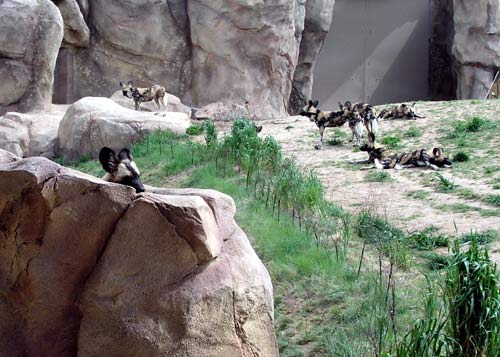
We stopped at a refreshments stand to get a drink. While sitting there, we saw a family of geese, who stopped
in a puddle to take their own version of an afternoon break.
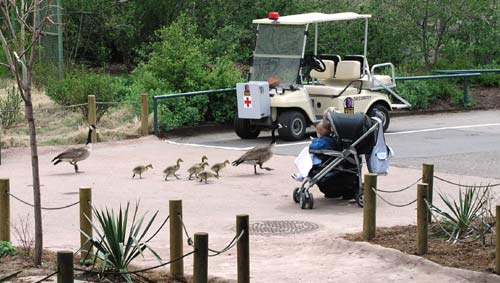
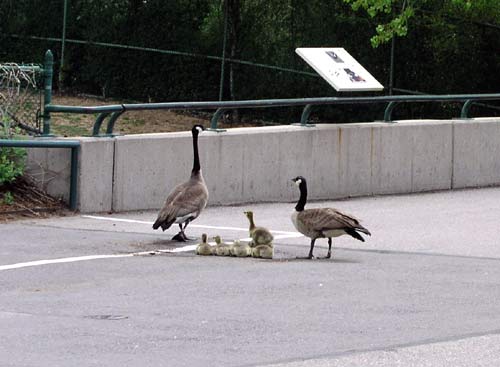
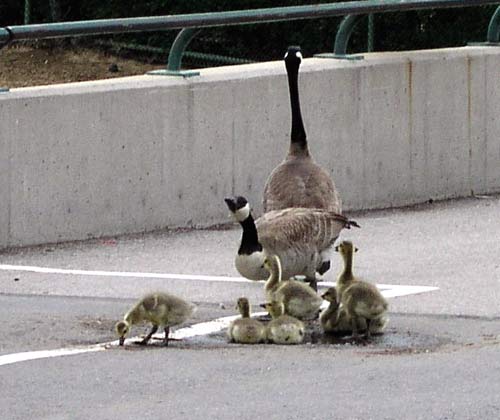
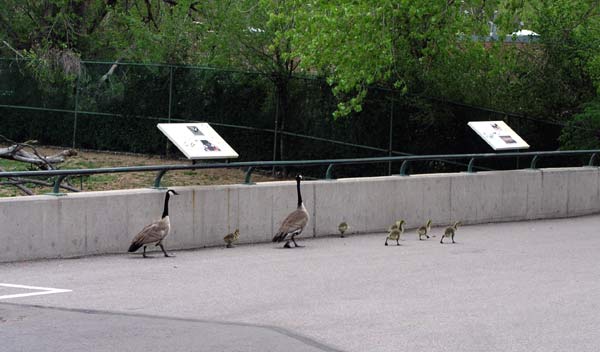
The Nile monitor:

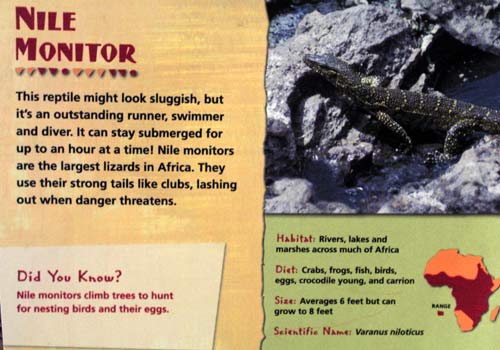
Nile MonitorThis reptile may look sluggish, but it's an outstanding runner, swimmer, and diver. It can stay submerged for up to an hour at a time! Nile monitors are the largest lizards in Africa. They use their strong tails like clubs, lashing out when danger threatens.
Did you know? Nile monitors climb trees to hunt for nesting birds and their eggs.
Habitat: Rivers, lakes, and marshes across much of Africa
Diet: Crabs, frogs, fish, birds, eggs, crocodile young, and carrion
Size: Averages 6 feet but can grow to 8 feet
Scientific Name: Varanus niloticus
African Cranes, Nyala, and the most aggressive bird:

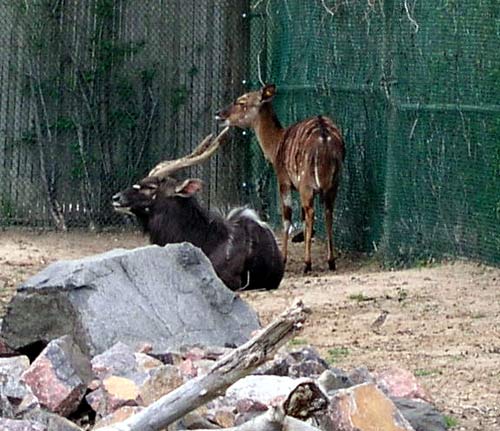
This bird was attacking everything it could find - small birds that landed in the pen, the bushes along the edge...I
don't know what it's problem was.
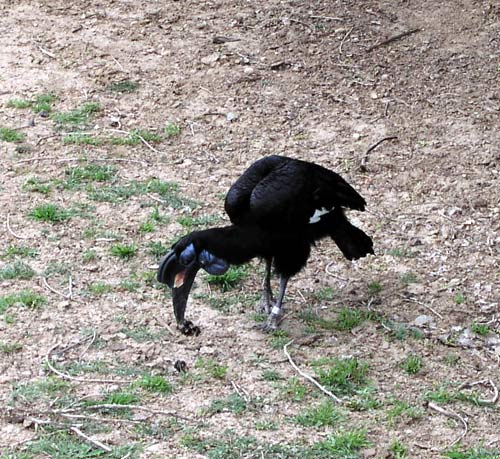
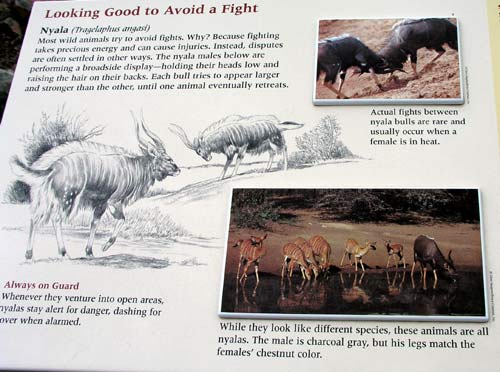
Looking Good to Avoid a FightNyala (Tragelaphus angasi)
Most wild animals try to avoid fights. Why? Because fighting takes precious energy and can cause injuries. Instead, disputes are often settled in other ways. The nyala males below are performing a broadside display - holding their heads low and raising the hair on their backs. Each bull tries to appear larger and stronger than the other, until one animal eventually retreats.Actual fights between nyala bulls are rare and usually occur when a female is in heat.
Next to the Nyala and the aggressive bird were cape buffalo.

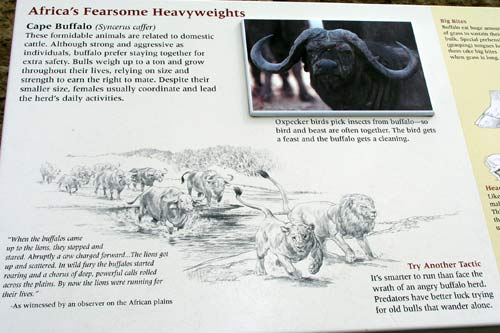
Africa's Fearsome HeavyweightsCape Buffalo (Syncerus caffer)
These formidable animals are related to domestic cattle. Although strong and aggressive as individuals, buffalo prefer staying together for extra safety. Bulls weigh up to a ton and grow throughout their lives, relying on size and strength to earn the right to mate. Despite their smaller size, females usually coordinate and lead the herd's daily activities.
Here's Mike, reading a sign about the zoos future plans.

We ran into more geese:
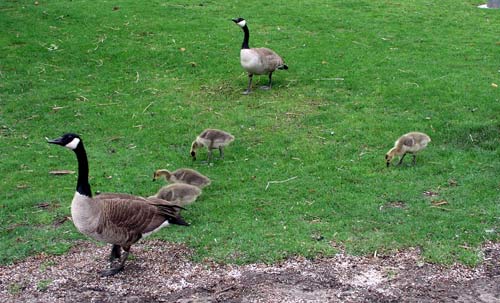
Bighorn sheep:

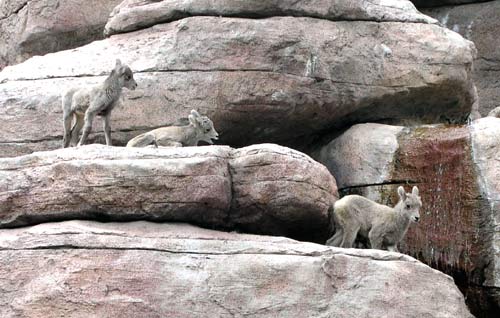
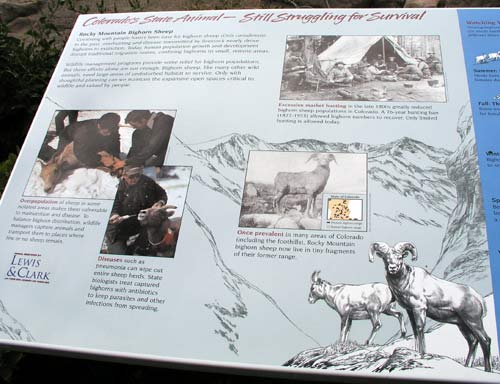
Colorado's State Animal - Still Struggling for SurvivalRocky Mountain Bighorn Sheep
Coexisting with people hasn't been easy for bighorn sheep (Ovis canadensis). In the past, overhunting and disease transmitted by livestock nearly drove bighorns to extinction. Today, human population growth and development disrupt traditional migration routes, confining bighorns to small, remote areas.Wildlife management programs provide some relief to bighorn populations. But these efforts are not enough. Bighorn sheep, like many other wild animals, need large areas of undisturbed habitat to survive. Only with thoughtful planning can we maintain the expansive open spaces critical to wildlife and valued by people.
Excessive market hunting in the late 1800s greatly reduced bighorn sheep populations in Colorado. A 76-year hunting ban (1877-1953) allowed bighorn numbers to recover. Only limited hunting is allowed today.
Overpopulation of bighorn sheep in some isolated areas makes the vulnerable to malnutrition and disease. To balance bighorn distribution, wildlife managers capture animals and transport them to areas where few or no sheep remain.
Disease such as pneumonia can wipe out entire sheep herds. State biologists treat captured bighorns with antibiotics to keep parasites and other infections from spreading.
This "lower" anteater was in the nursery area. We couldn't tell if she was a mom-to-be or had hidden her young somewhere in this cage.
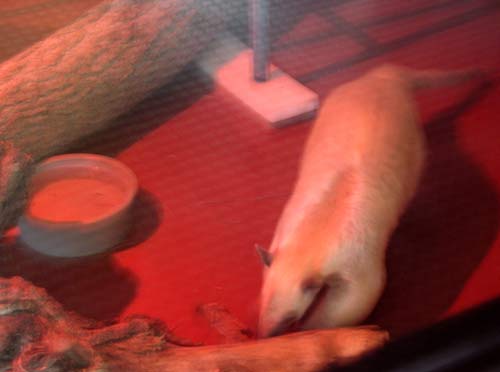
Dall sheep:

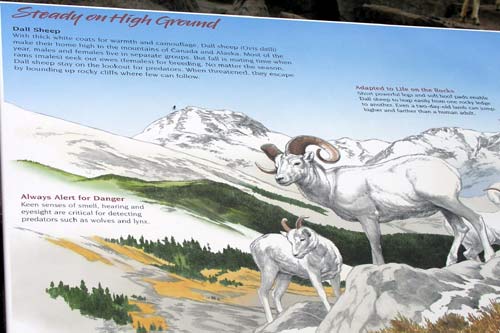
Steady on High GroundDall Sheep
With think white coats for warmth and camouflage, Dall sheep (Ovis dalli) make their home high in the mountains of Canada and Alaska. Most of the year, males and females live in separate groups. But fall is mating time when rams (males) seek out ewes (females) for breeding. No matter the season, Dall sheep stay on the lookout for predators. When threatened, they escape by bounding up rocky cliffs where few can follow.Adapted to life on the rocks
Short powerful legs and soft hoof pads enable Dall sheep to leap easily from one rocky ledge to another. Even a two-day-old lamb can jump higher and farther than a human adult.
Here's a monkey we passed:

Penguins:

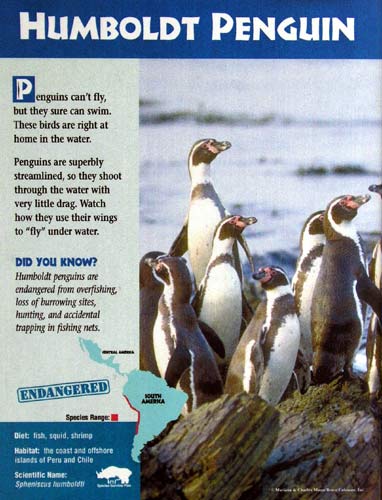
Humboldt PenguinPenguins can't fly, but they sure can swim. Penguins are superbly streamlined, so they shoot through the water with very little drag. Watch how they use their wings to "fly" under water.
Did you know? Humboldt penguins are endangered from overfishing, loss of burrowing sites, hunting, and accidental trapping in fishing nets.
Diet: fish, squid, shrimp
Habitat: the coast and offshore islands of Peru and Chile
Scientific Name: Spheniscus humboldti
This little guy caught my attention through his consistent pacing. In some ways, his fast pacing round and round his island
made it very hard to catch a picture of him. On the other hand, I knew to stay put since he would be back.
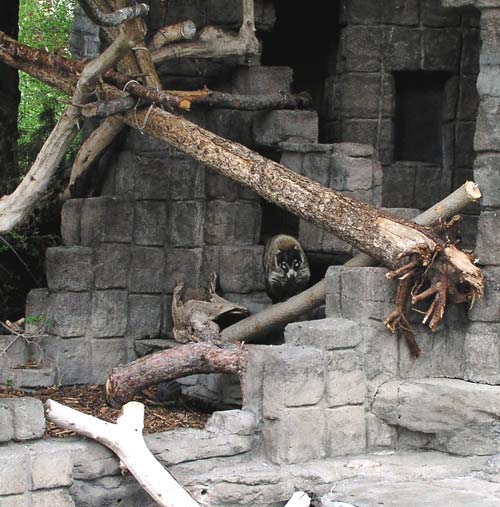
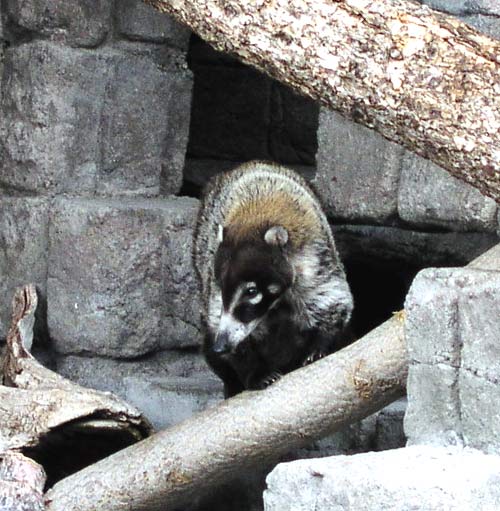
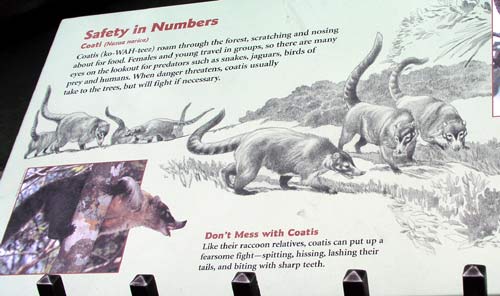
Safety in NumbersCoati (Nasua narica)
Coatis (ko-WAH-teez) roam through the forest, scratching and nosing about for food. Females and young travel in groups, so there are many eyes on the lookout for predators such as snakes, jaguars, birds of prey, and humans. When danger threatens, coatis usually take to the trees, but will fight if necessary.Don't mess with Coatis. Like their racoon relatives, coatis can put up a fearsome fight - spitting, hissing, lashing their tails, and biting with sharp teeth.
His habitat happened to be one of the oldest exhibits at the zoo.
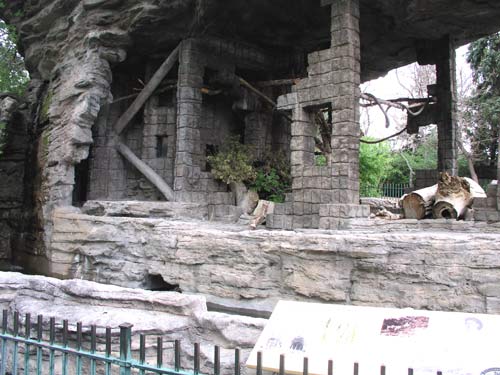

"Bear Mountain - The First of Its KindThe Denver Zoo makes history. Built in 1918, this animal enclosure was the first U.S. zoo exhibit that was constructed of artificial rockwork and resembled natural habitat. Bear mountain was cutting edge for its time and gained the Denver Zoo worldwide recognition.
A massive steel structure was built to support the heavy rockwork.
Simulated rock and lack of traditional bars or cages made this exhibit unique.
Bottom right text: This 1916 drawing shows the eye-level view visitors would have of Bear Mountain.
We saw two grizzly bears play-wrestling. The darker one won.

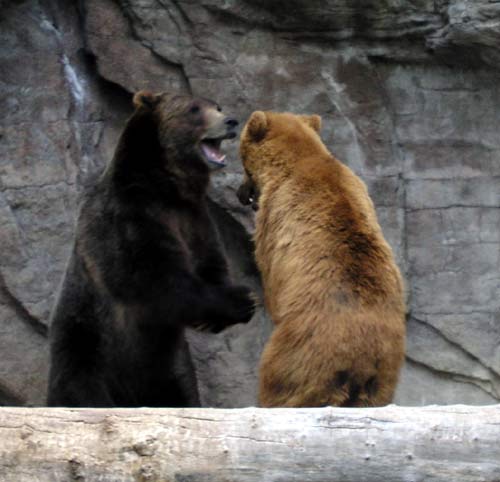
We spent some time watching the monkeys play. There was a large anteater in the back of their pen.
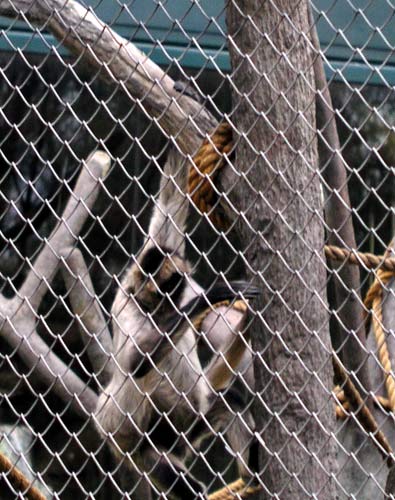
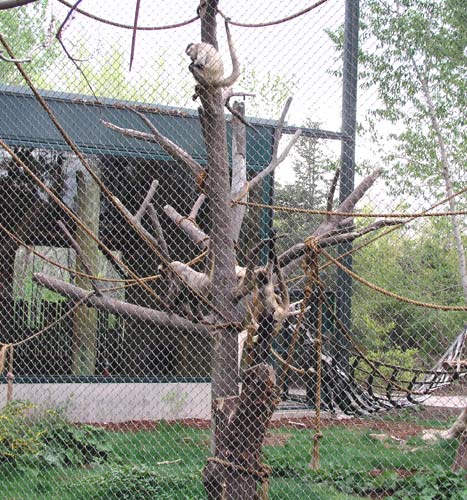
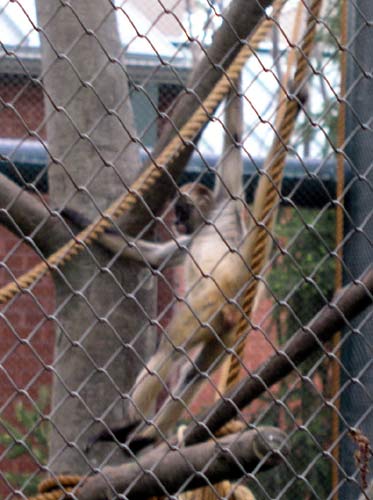
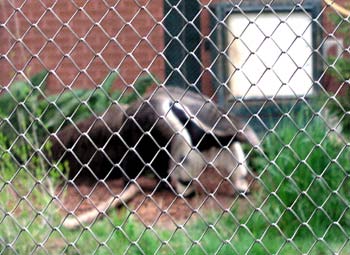
Lemurs are one of my faves...

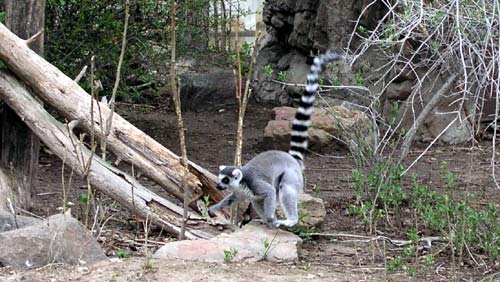
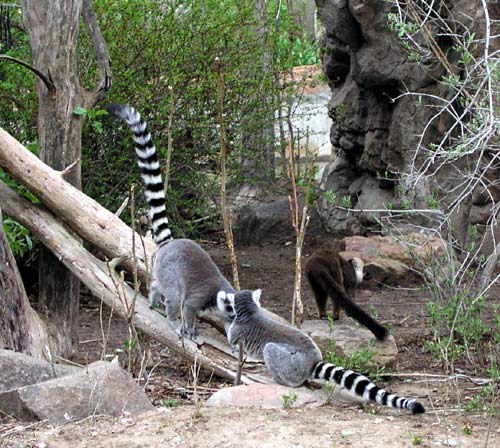
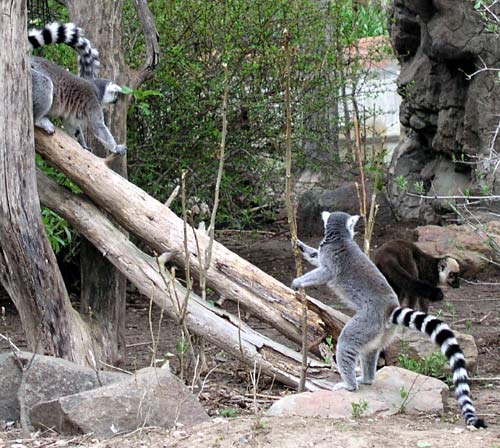
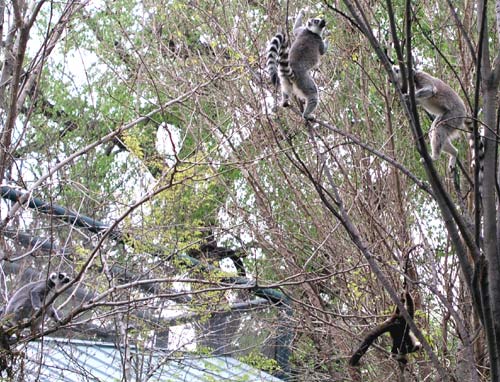
This crane was busy doing his dance:
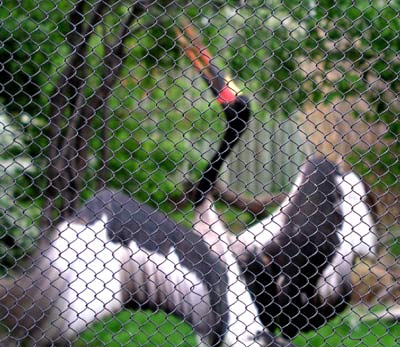
Pink flamingos:

Bald eagle:

Rhino:

Zoo exit:
